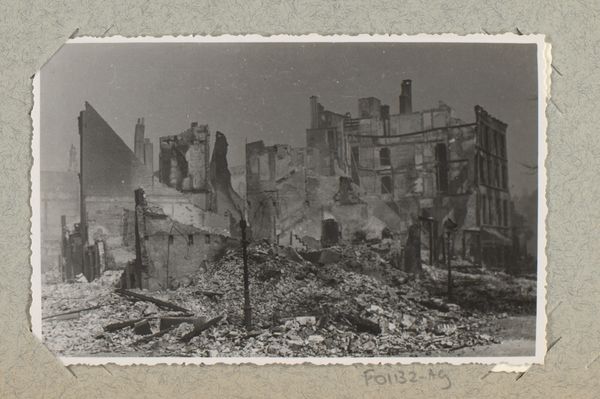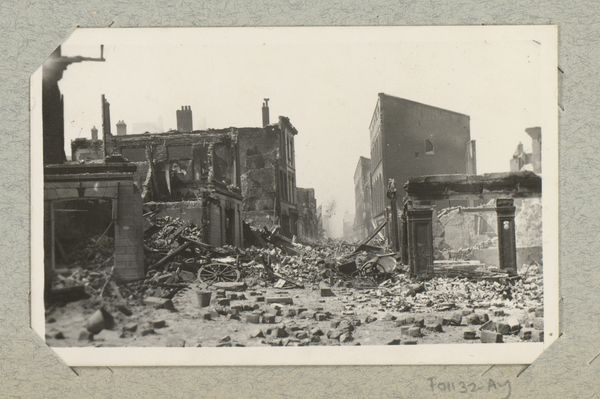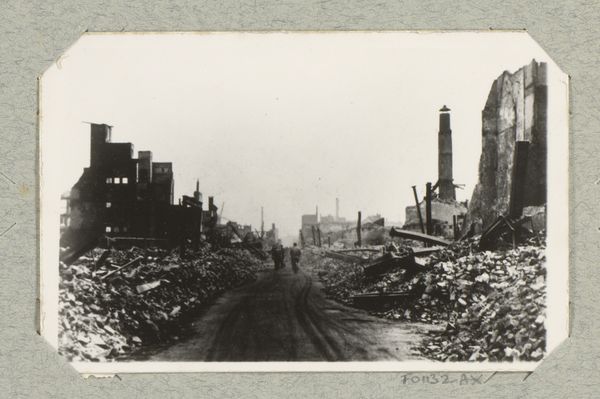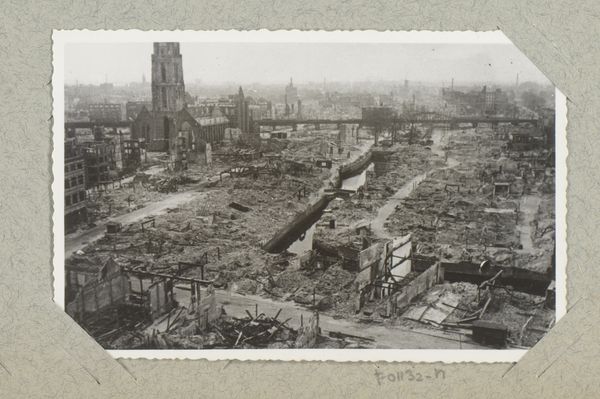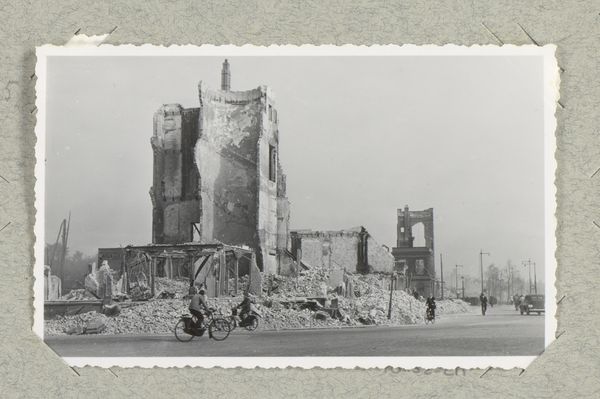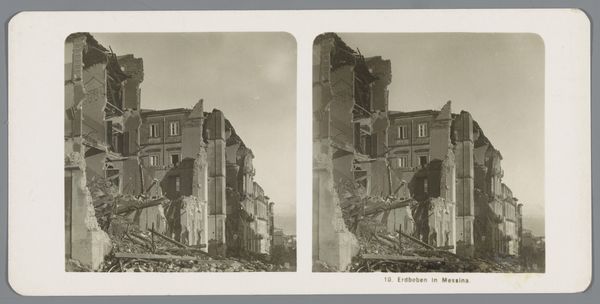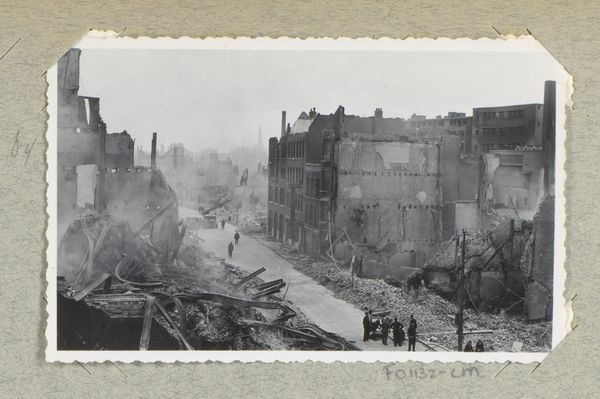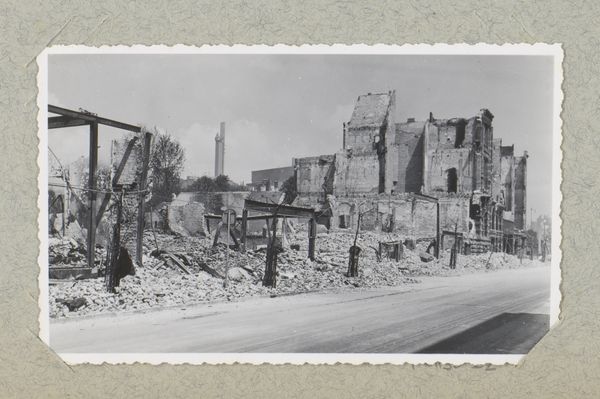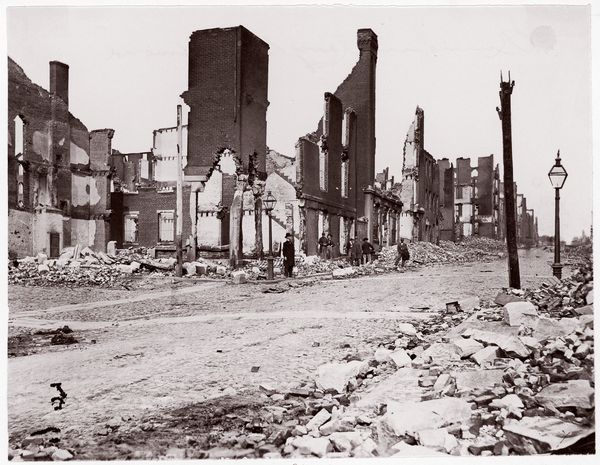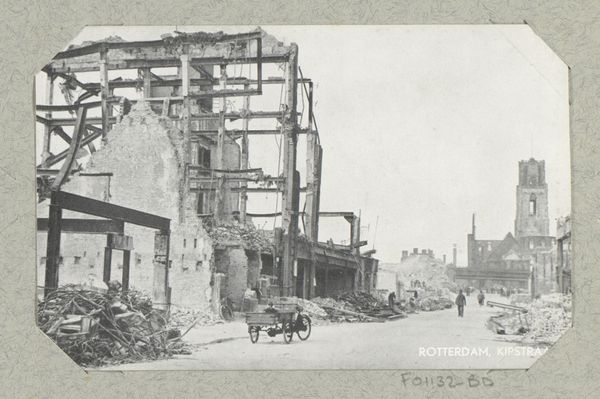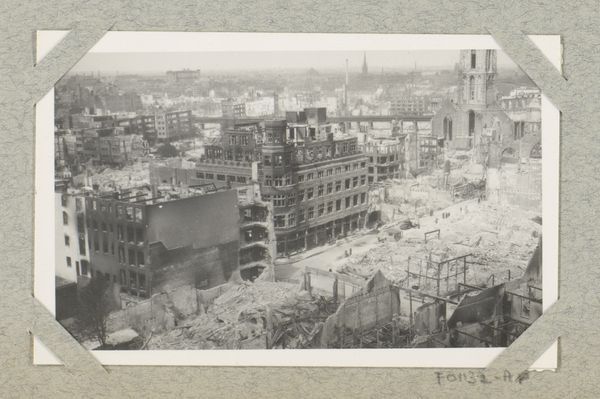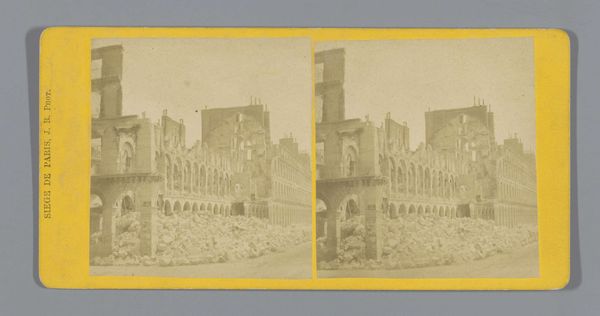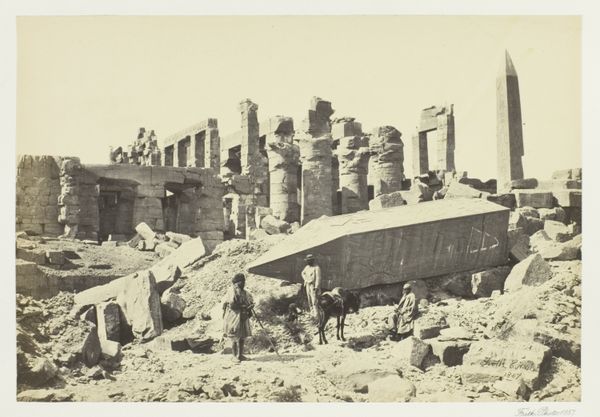
Ruïnes aan de Korte Hoogstraat, gezien vanaf de Soetensteeg te Rotterdam c. 1940 - 1945
0:00
0:00
photography, gelatin-silver-print
#
archive photography
#
photography
#
gelatin-silver-print
#
cityscape
#
history-painting
#
realism
Dimensions: height 86 mm, width 138 mm
Copyright: Rijks Museum: Open Domain
Curator: Here we have J. Nolte’s gelatin-silver print, "Ruïnes aan de Korte Hoogstraat, gezien vanaf de Soetensteeg te Rotterdam," taken sometime between 1940 and 1945. It depicts the ruins after the bombing of Rotterdam. What's your initial impression? Editor: Stark. Devastating. The composition immediately draws the eye down that desolate street. The contrast is quite strong; you get this palpable sense of destruction, almost as if it were a stage set. Curator: Absolutely. What strikes me is the photographic process itself, the use of gelatin silver. Consider the socio-economic conditions in which Nolte was working. Wartime meant limited resources. The gelatin silver print was not only a means of documentation but also a testament to resourcefulness in a time of scarcity. Editor: A technical marvel, considering. Look at the texture achieved with the gelatin-silver process. See how the light catches the fragmented edges of the buildings, almost sculptural in their decay. It's an incredibly detailed rendering of ruin. Curator: The photograph exists not merely as an artistic creation, but as a historical document, a means to convey information to people and organizations on a mass scale. Editor: But don't you think that Nolte consciously frames the devastation, turning it into a visual statement? There's a definite order in the chaos. It's not just a snapshot, it's a calculated arrangement. Curator: I disagree that there's necessarily "order," but, undeniably, by taking the shot at all Nolte is participating in an industry deeply entangled with capital. He, like the subjects of the image, is laboring and thus the shot implicates him and the work of constructing history in the ongoing march of production. Editor: An interesting viewpoint. Curator: It underscores photography's connection to society and its importance as historical record, which I believe helps one interpret photographs like Nolte's. Editor: Indeed, viewing the photograph this way definitely expands our understanding of its layers, creating an enriching, if sobering, viewing experience.
Comments
No comments
Be the first to comment and join the conversation on the ultimate creative platform.
